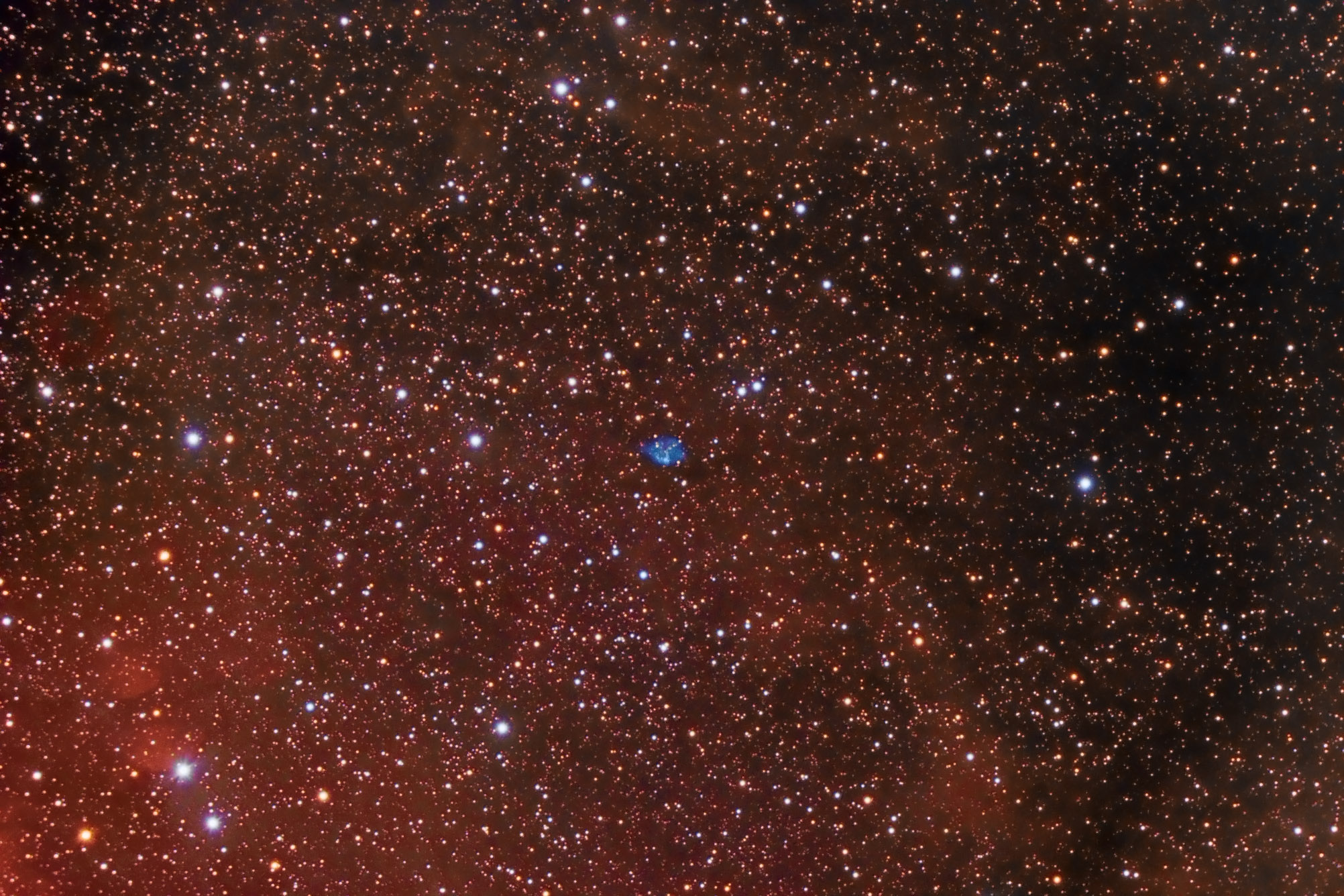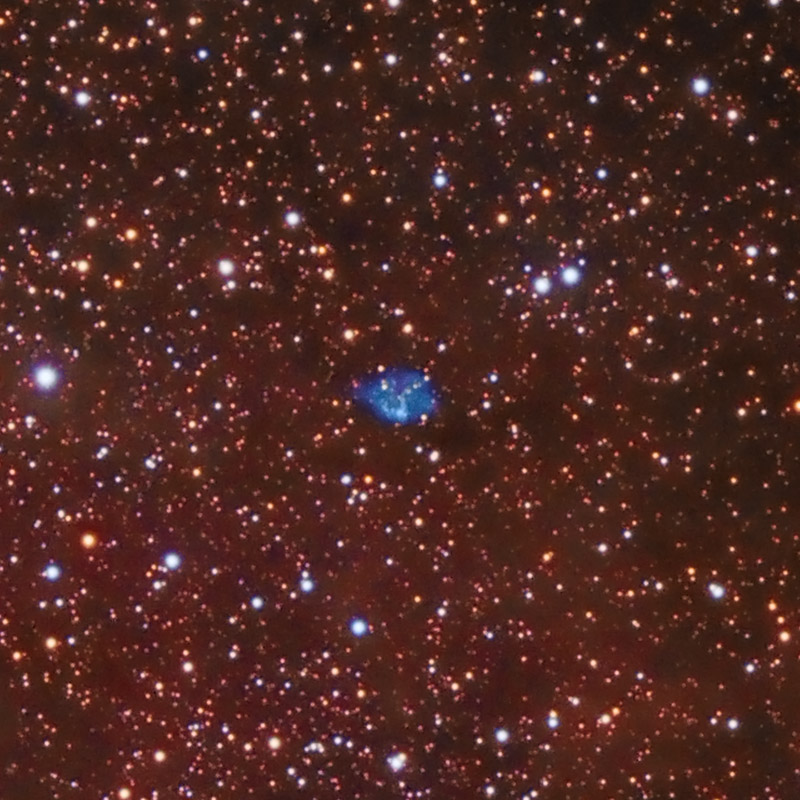| Description | Images |
Object name: PN G100.4+04.6Designation(s): PN_G100.4+04.6, PN G100.4+04.6/PM 1-333 is listed at NED as a possible planetary nebula though the most recent paper on it from 2009 considers it has proven it to be a true planetary nebula. In the article, they refer to it as PM 1-333. The abstract has this to say about it: "PM 1-333 is an extended planetary nebula with a high-excitation (He II?4686/Hß up to ~ 0.9) patchy circular main body containing two low-excitation knotty arcs. A low Ne([S II]) of ~ 450/cm3 and Te([O III]) of ~ 15000 K are derived for this nebula. Abundance calculations suggest that PM 1-333 is a type I planetary nebula. The lack of a sharp shell morphology, low electron density, and high excitation strongly suggest that PM 1-333 is an evolved planetary nebula. PM 1-333 also shows two low-ionization polar structures whose morphology and emission properties are reminiscent of collimated outflows. We compare PM 1-333 with other evolved planetary nebulae with collimated outflows and find that outflows among evolved planetary nebulae exhibit a large variety of properties, in accordance with these observed in younger planetary nebula." Related Designation(s):PN G100.4+04.6, |

